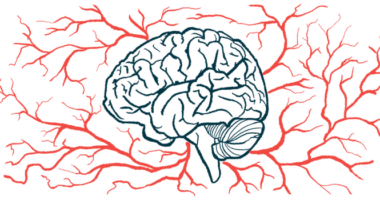Vertex, CRISPR complete BLA for US approval of exa-cel
The investigational gene-editing therapy is for sickle cell disease and TDT

Vertex Pharmaceuticals and CRISPR Therapeutics have completed an application to the U.S. Food and Drug Administration (FDA) seeking approval of exagamglogene autotemcel (exa-cel) for the treatment of sickle cell disease (SCD) and transfusion-dependent beta thalassemia (TDT).
The rolling biologics license application, which was initiated late last year, includes a request for FDA priority review. If granted, that would shorten the agency’s review time from the standard one year to eight months.
Similar applications were submitted in the European Union (EU) and U.K. last year, where they are under review by regulatory bodies.
“The completion of our exa-cel global regulatory filings is a historic milestone,” Carmen Bozic, MD, executive vice president of global medicines development and medical affairs and chief medical officer at Vertex, said in a press release.
“We want to thank the clinical trial participants and the sickle cell and beta thalassemia communities, as well as the physicians, nurses, coordinators, caregivers and friends who support them,” Bozic said.
Both SCD and TDT are diseases that affect hemoglobin — the protein that helps red blood cells transport oxygen throughout the body. In SCD patients, a faulty version of hemoglobin is produced, whereas TDT patients have low levels, or are missing the protein altogether.
In either case, the end result is anemia, in which there are not enough healthy red blood cells to carry oxygen through the body.
With exa-cel, formerly known as CTX001, a patient’s blood cell precursors are isolated and genetically modified to make high levels of fetal hemoglobin — a form of hemoglobin produced during fetal development that is more effective at carrying oxygen than its adult counterpart.
After a round of chemotherapy to destroy faulty blood cell precursors and make room for the edited ones, modified cells are returned to the patient via a stem cell transplant. These cells are then expected to populate the blood with healthy hemoglobin-producing blood cells.
Cell genetic editing involves the use of CRISPR/Cas9, an approach adapted from a natural system that bacteria use as an immune defense mechanism. Essentially, scientists can leverage the system to add, remove, or change specific sections of DNA.
Modifications involved in exa-cel work to stop the production of BCL11A, a protein that normally shuts off the production of fetal hemoglobin after birth.
“Within a decade, we have progressed from the discovery of the CRISPR platform to the first regulatory filings for a CRISPR-based therapy, which speaks to the transformative nature of CRISPR technology,” said Phuong Khanh Morrow, MD, chief medical officer at CRISPR Therapeutics.
The CLIMB trials
Data from two ongoing clinical trials — CLIMB–111 (NCT03655678) and CLIMB–121 (NCT03745287) — comprise major components of the companies’ regulatory applications.
The open-label Phase 2/3 CLIMB–121 study enrolled patients, ages 12–35, with severe SCD, defined as having at least two severe vaso-occlusive crises (VOCs) per year in the two years before enrollment.
All participants received a single dose of exa-cel and are being followed for about two years.
Results showed that a single dose of exa-cel increased fetal hemoglobin levels and prevented VOCs in these patients.
Findings from CLIMB-111, a similarly designed trial that evaluated the therapy in TDT patients, also found increases in fetal hemoglobin and clinical benefit.
Another pair of open-label Phase 3 trials are currently evaluating the treatment’s safety and effectiveness in pediatric patients, ages 5–11, with plans to eventually expand to patients as young as 2.
CLIMB–151 (NCT05329649) is recruiting up to 12 children with SCD at sites in the U.K., U.S., and Italy. CLIMB–141 (NCT05356195) is recruiting up to 12 children with TDT in Canada, Germany, and the U.K.
The Phase 3b CLIMB-161 trial (NCT05477563) also is being conducted to support expansion of exa-cel’s manufacturing footprint, should it be approved and commercially launched. The trial is recruiting up to 12 people with SCD or TDT, ages 12–35, who will be followed for a year after receiving the therapy.
Eligibility for long-term participation
Participants who complete any of these trials are invited to enroll in CLIMB-131 (NCT04208529), where exa-cel’s safety and effectiveness are being monitored for up to 15 years.
In general, the side effect profile of exa-cel has been consistent with the known effects of busulfan, the chemotherapy agent that’s used before the stem cell transplant. Vertex now is seeking to develop a less-aggressive conditioning approach using technology from ImmunoGen.
Exa-cel holds a number of designations intended to speed its development toward regulatory approval. These include fast track, orphan drug, regenerative medicine advanced therapy, and rare pediatric disease designations in the U.S., orphan drug and priority medicines designations in the EU.







